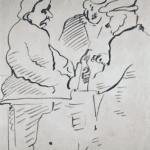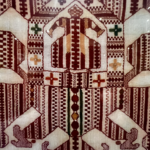Elizabeth did not live to see her greatest commission concluded. It befell Catherine II (the Great) to oversee the completion of the palace and turn it into a unique treasury of art. Catherine added three more buildings to the Winter Palace (already housing one-thousand rooms) to accommodate her private collections of artwork that grew at a dazzling pace.
Adjacent to the Winter Palace, the Small Hermitage was built on the waterfront in 1769. Here, Catherine kept her new art purchases and occasionally hosted private parties, referred to as ‘small hermitages’ for a select circle of friends. Reluctant to admit visitors into her art sanctuary, Catherine wrote in a letter, “Only the mice and I can admire all this.” Appropriately, the building was called the Hermitage—a dwelling place of a hermit.
Added in 1771 to house the ever-expanding Imperial collections, the Great Hermitage was neoclassical, in keeping with the changed architectural fashion. At the end of Catherine’s reign, a gallery was installed to accommodate the Raphael Loggias, 18th-century copies of the original frescoes in the Vatican, Rome. The Great Hermitage was connected by a hanging bridge to the Hermitage Theater, across the narrow Winter Canal. The Imperial Museum opened to public in the New Hermitage, the fifth building of the Hermitage complex, in 1852, under Nicholas I.









You must be logged in to post a comment.